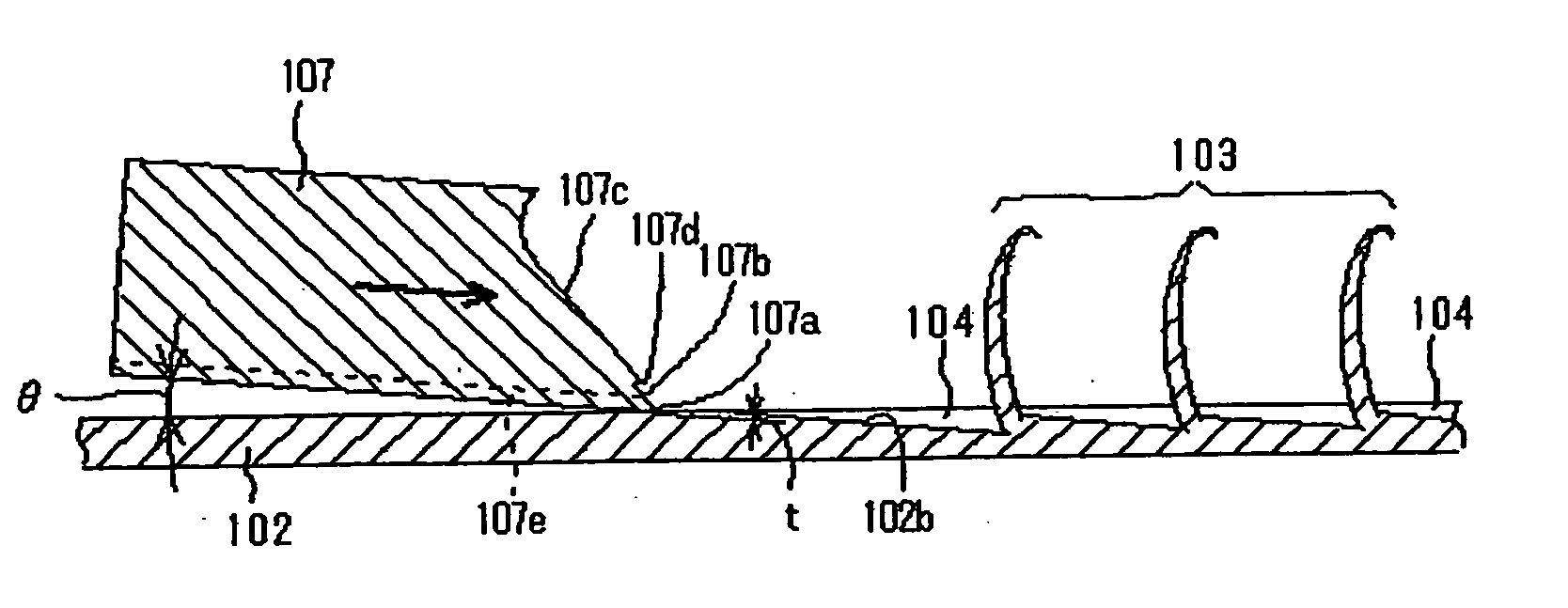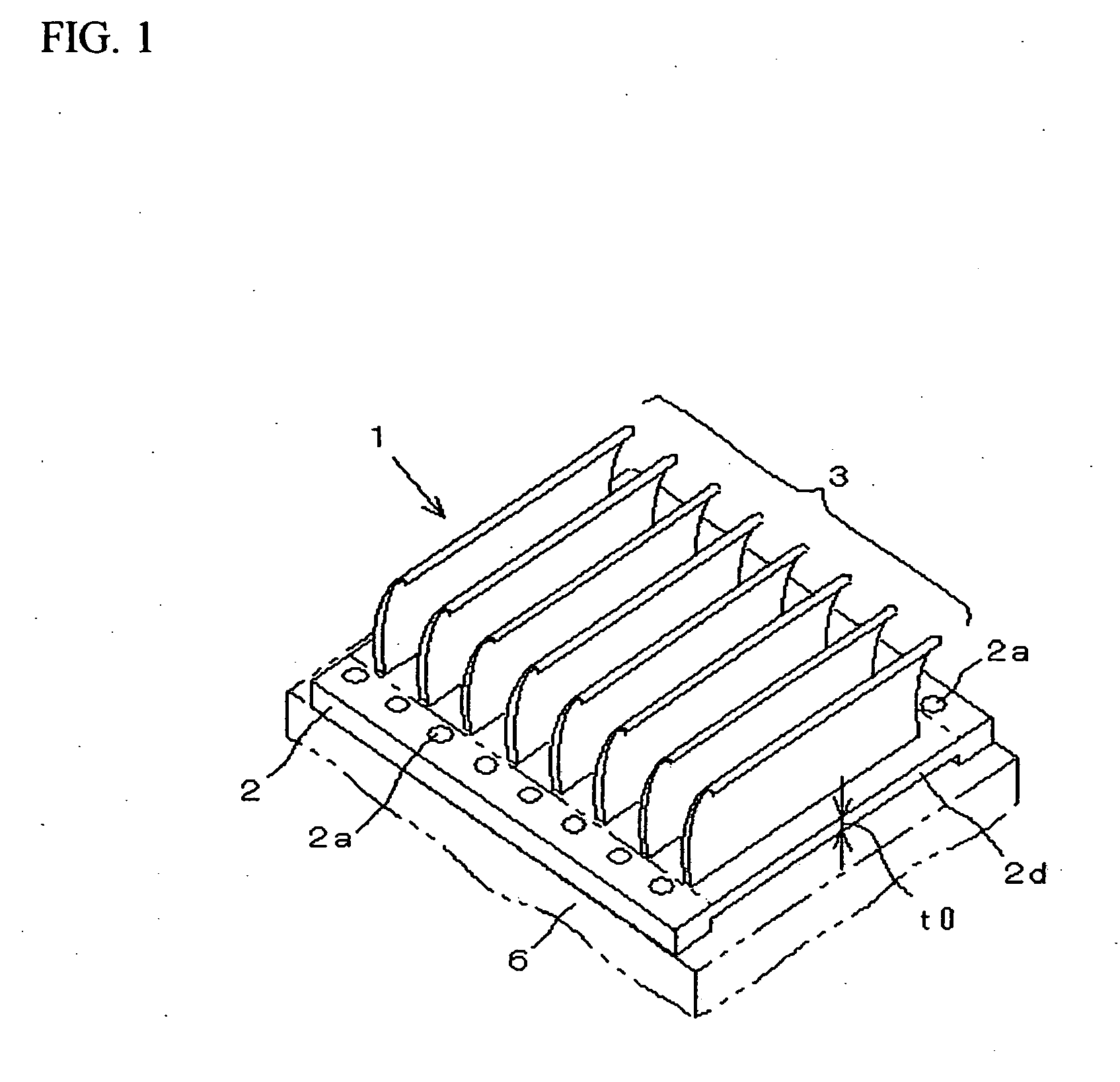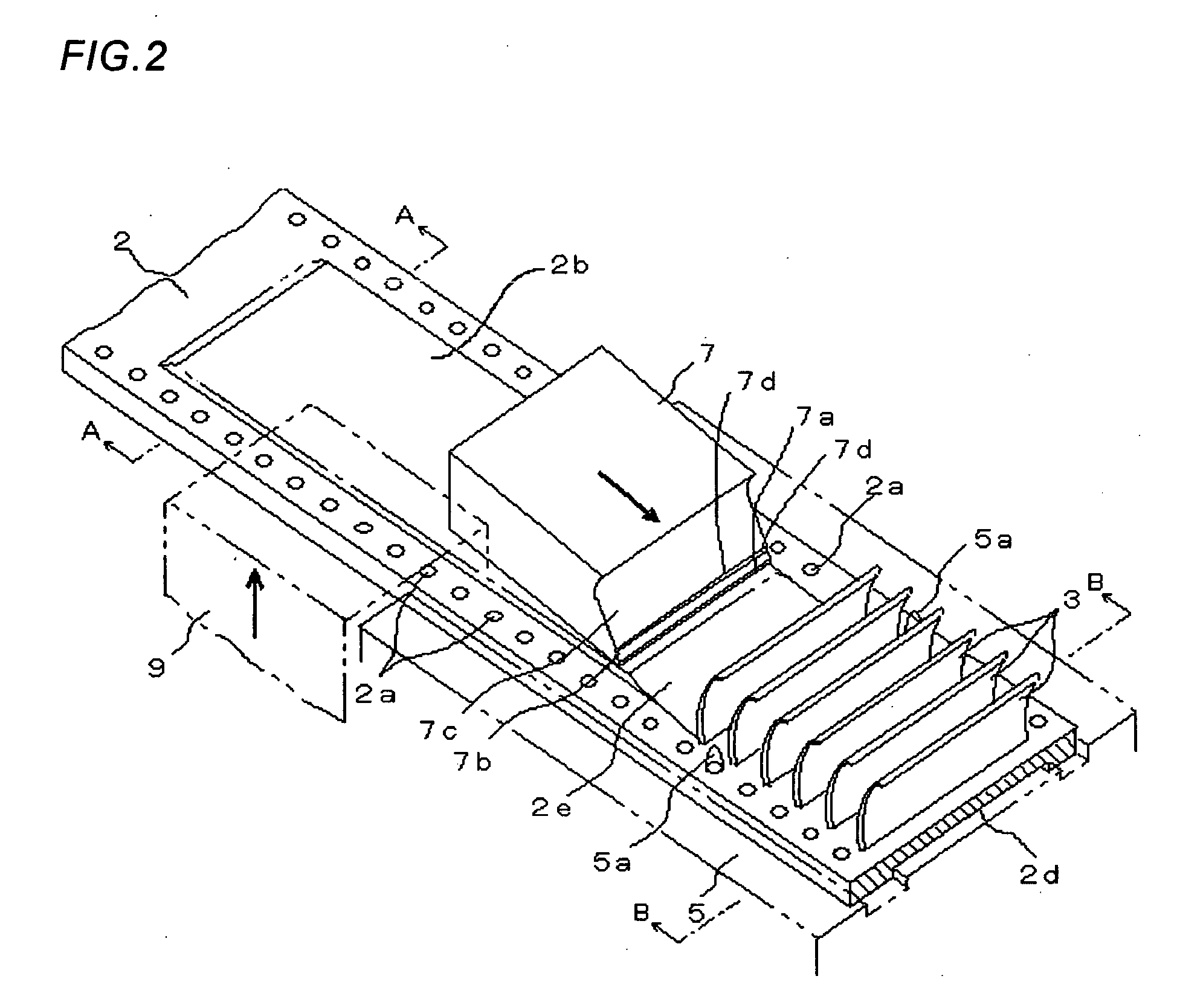Radiator and method of manufacturing the same
- Summary
- Abstract
- Description
- Claims
- Application Information
AI Technical Summary
Benefits of technology
Problems solved by technology
Method used
Image
Examples
example 1
[0056]FIG. 1 is a perspective view depicting a radiator according to Example 1 of the present invention, FIG. 2 is a perspective view depicting a method of manufacturing the radiator of FIG. 1; FIG. 3 is a cross-sectional view depicting the portion that is cut along line A-A of FIG. 2, and FIG. 4 is a cross-sectional view depicting the portion that is cut along line B-B of FIG. 2. The metal material used in the radiator in this example is capable of being subjected to plastic working, and also has a good coefficient of thermal conductivity. For example, a metal plate with a specific plate thickness formed from aluminum, an aluminum alloy, a copper alloy, stainless steel, or another such material can be used.
[0057] The radiator 1 of the present example is configured from a metal plate 2 and a plurality of heat-radiating fins 3 formed integrally on the surface thereof. The heat-radiating fins 3 extend parallel to the narrow side of the metal plate 2. Also, this plurality of heat-radi...
example 2
[0075]FIG. 10 depicts the second example of the present invention, and depicts a method of forming the heat-radiating fins with an even greater surface area in the radiator. A carving tool 10 used in this second example is substantially the same as the carving tool 7 used in the first example, but is different in that a plurality of concavities 11 are formed in a blade 10a perpendicular to the direction of movement in the distal end at the bottom surface. This carving tool 10 has two inclined surfaces 10b and 10c that are inclined at specific angles from the blade 10a, and a step 10d is formed between these two inclined surfaces 10b and 10c in the same manner as in the carving tool 7 shown in the first example.
[0076] Similar to the first example previously described, pilot holes 2a that function as positioning and interlocking parts are formed in the hoop-shaped metal plate 2 sequentially supplied from a supply device, a press tool 9 is pressed from the other side of the hoop-shape...
example 3
[0079]FIG. 11 depicts the third example of the present invention, and depicts a method of manufacturing a radiator with a configuration wherein a plurality of heat-radiating fin rows are formed simultaneously in the hoop-shaped metal plate 2. A carving tool 20 used in the third example is also substantially the same as the carving tool 7 used in the first example, but is different in that a pair of blades 22 and 23 are formed by forming a deep dividing groove 21 in the middle of the blade perpendicular to the movement direction at the distal end on the side of the bottom surface to divide the blade in two, as shown in FIG. 11. Also, in the carving tool 20, two pairs of inclined surfaces 22a, 22b and 23a, 23b that are inclined at specific angles from the blades 22 and 23 are formed, and steps 22c and 23c are formed between these two pairs of inclined surfaces 22a, 22b and 23a, 23b.
[0080] Pilot holes 2a that function as positioning and interlocking parts are formed in the hoop-shaped...
PUM
| Property | Measurement | Unit |
|---|---|---|
| Length | aaaaa | aaaaa |
| Thickness | aaaaa | aaaaa |
| Width | aaaaa | aaaaa |
Abstract
Description
Claims
Application Information
 Login to View More
Login to View More - R&D
- Intellectual Property
- Life Sciences
- Materials
- Tech Scout
- Unparalleled Data Quality
- Higher Quality Content
- 60% Fewer Hallucinations
Browse by: Latest US Patents, China's latest patents, Technical Efficacy Thesaurus, Application Domain, Technology Topic, Popular Technical Reports.
© 2025 PatSnap. All rights reserved.Legal|Privacy policy|Modern Slavery Act Transparency Statement|Sitemap|About US| Contact US: help@patsnap.com



